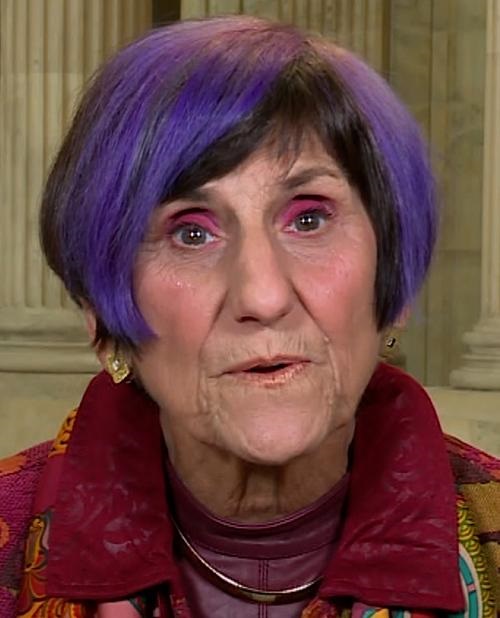Supply Chain Shortages Threaten Medical Imaging Testing While Clinical Laboratories Face Scarcity of Blood Collection Specimen Tubes
From infant formula to contrast dye for CT scans, ongoing healthcare product shortages highlight continuing US supply chain and manufacturing issues
Medical laboratory directors and pathologists have firsthand knowledge of COVID-19 pandemic-driven supply chain issues, having faced backlogs for everything from pipettes and transport media to personal protective equipment (PPE). But the latest shortage impacting blood collection tubes is another example of why it is important to manufacture key products—including clinical laboratory tests, analyzers, and consumables—domestically.
On January 19, 2022, the federal Food and Drug Administration (FDA) issued a Letter to Healthcare Providers and Laboratory Personnel recommending “conservation strategies” to minimize blood collection tube use because of “significant disruptions” in supplies due to COVID-19-increased demand and “recent vendor supply challenges.”
“The FDA updated the device shortage list to include all blood specimen collection tubes (product codes GIM and JKA),” the letter noted.
This announcement followed a similar June 10, 2021, Letter to Healthcare Providers and Laboratory Personnel that stated the FDA was aware “that the US is experiencing significant interruptions in the supply of sodium citrate blood specimen collection (light blue top) tubes because of an increase in demand during the COVID-19 public health emergency and recent vendor supply challenges.”
A spokesperson for Becton-Dickinson (BD), a manufacturer of blood specimen collection products, told Forbes that the COVID-19 pandemic caused “the most unpredictable demand that BD has experienced in our company’s history.” The spokesperson added, “Worldwide, BD produced nearly a half a billion additional blood tubes in 2021 versus 2020 … Like every business across every industry around the world, BD is experiencing limited availability of and access to raw materials, shipping and transportation delays, and labor shortages, which hinders our ability to ramp production.”
Christine Nielsen, CEO of the Canadian Society for Medical Laboratory Science, explained that the supply-chain problem includes many routine items, such as Phosphate-buffered saline, and cannot be solved by stockpiling certain supplies.
“It’s also a challenge because we’ve moved to just-in-time (JIT) inventory across all sectors, including labs … They outdate just like food [and] are no longer fresh. [The product] is no longer reliable and you can’t use it. So, we can’t stockpile either,” Nielsen told Forbes.
Shortages Hit Other Critical Healthcare Sectors
But shortages of supplies and equipment have spread beyond the clinical laboratory. Intravenous contrast—which contains iodine and is used to improve the accuracy of CT scans and exclude life-threatening conditions such as cancer—has been in short supply since GE Healthcare shut down its manufacturing facility in Shanghai, China, during the city’s two-month pandemic lockdown that began in early April.
“I can’t overstate the importance of iodinated contrast for really critical diagnostic tests,” said radiologist Geoffrey Rubin, MD, a specialist in cardiovascular and pulmonary imaging, and professor and Chair of Radiology at University of Arizona, Tucson, in a Radiological Society of North America (RSNA) news release covering the contrast shortage.
“This isn’t an ancillary tool. This is something that’s used many, many times every day for both lifesaving decisions in the setting of trauma and for managing cancer patients and determining the appropriate care for them,” he added.

GE Healthcare is one of four companies that supply iodine-containing contrast to the United States, but the other three manufacturers have been unable to scale-up and offset the shortage.
By June 14, 2022, the Shanghai facility had returned to 100% production capacity following the easing of local COVID restrictions, according to a GE Healthcare statement. But shortages remain.
“There is still the challenge of bringing the contrast media across the ocean and distributing it to healthcare facilities across the nation,” Nancy Foster, the American Hospital Association’s (AHA) Vice President of Quality and Patient Safety Policy, told CNN.
“The hospital association estimates that about half of all hospitals in the United States rely on GE for contrast dye to perform about 20 million scans a year, or about 385,000 scans each week,” CNN reported.
Critical Medical Products Must be Manufactured Domestically
Oncologist Shikha Jain, MD, Assistant Professor of Medicine at the University of Illinois Cancer Center in Chicago, told CNN that contrast shortages are “not an isolated incident.”
“We’ve been having shortages throughout the pandemic. At the very beginning of the pandemic, it was PPE shortages,” Jain said. “Now, we have contrast shortages and formula shortages for babies.”
The infant formula crisis is the other headline grabbing news in recent weeks. Three companies—Abbott, Reckitt, and Gerber—manufacture 95% of the baby formula sold in the US, with Abbott controlling roughly 42% of the nation’s supply, CNN reported.
“Initially, this problem affected those who are on more specialized formulas or had nutritional issues,” Stephanie Seger, Director of Government Relations at Children’s Mercy Hospital in Kansas City, Mo., told CNN. ‘Then the gap, or the emptiness on the shelves, increased to the point where it’s now any formula. It’s now any parent of any baby.”
The Biden administration took steps in May to increase the supply of imported formula, but like the Intravenous contrast shortage, the problem has not been solved.
The COVID-19 pandemic has served to underscore the serious issues affecting supply chains for hospital, medical laboratory, and other critical supplies. While no quick fix has appeared on the horizon, the clinical laboratory industry should take steps now to work toward long-term solutions.
—Andrea Downing Peck
Related Information:
GE Healthcare Update on Iodinated Contrast Media
Blood Specimen Collection Tube Shortage: Frequently Asked Questions
Patients Face Long Delays for Imaging of Cancers and Other Diseases
Memorandum: Hearing on ‘Formula Safety and Supply: Protecting the Health of America’s Babies’
President Biden Announces Additional Steps to Address Infant Formula Shortage
Despite Moves to Increase Supply, Families Are Still Feeling the Pain of the Baby Formula Shortage
Blood Collection Tube Shortages Continue, ‘Routine’ Labs Should Be Limited
Hospitals Grapple with Shortage of Crucial Component for Medical Imaging Testing



